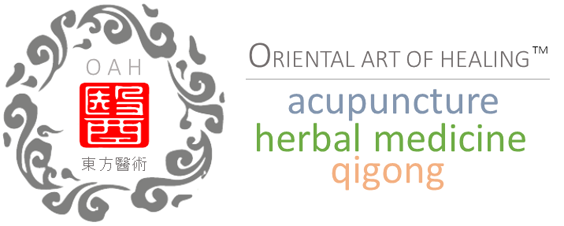Acupuncture is the insertion of fine needles into the specific points, called acupoints, on body surface. More than 2000 acupoints have been mapped and used in traditional Chinese medicine over thousands of years. Most of the acupoints are located along the body meridians (or channels) that are thought to conduct and regulate the Qi (vital energy) flow in the whole body.
Acupuncture needles are made from stainless steel and are very fine. The sensation of needling varies depending on the individuals and the acu- points. While most patients feel some minimal sensation as the needles are inserted, some feel none at all. People may experience sore, numbness, heaviness, and tightness locally or spreading along the meridian, when the needle is manipulating.
In general, acupuncture is very safe when practiced by a full-trained acupuncturist. However, there are certain conditions that you should notify your acupuncturist about before receiving the treatment. For instance, electroacupuncture should be avoided if you are carrying a pacemaker. In case you are a hemophiliac or have a tendency to bleed or bruise easily, you may want to consider a different type of care, including the needle-less acupuncture. The needles we use are sterile, individually packed and disposable; therefore there is no risk of disease transmission caused by the treatments.
Electroacupuncture has been widely used for treating varies of clinic conditions, including pain relief, by the practitioners in TCM in China since 1958. The only difference of electroacupuncture from traditional acupuncture is that, in electracupuncture, the electric pulses rather than a manual stimulation, are applied to the inserted acupuncture needles. A special device is used to generates the adjustable electric pulses with desired amplification and frequency patterns depended on the disease features and the patient’s conditions. The pulses were delivered by a fine wire connected to the needle with a small clip. Alternatively, electroacupuncture can be employed by using electrodes that are taped to the acupoints on the skin instead of being inserted with acupuncture needles. The procedure is especially appreciated by people who have a fear of needles or a condition that the needling is a contraindication (e.g., hemophilic or other bleeding tendency conditions).
Moxibustion is a traditional Chinese medical technique that involves the application of heat to the acupoints to promote Qi flow and restore the Yang deficiency, or remove the “Cold Pathogens". The heat is typically produced by burning of mugwort, a small, spongy herb, to facilitate healing. Moxibustion is as old as acupuncture. It can be used independently or as adjunction to acupuncture by placing the heat to the distant handle of an inserted acupuncture needle.
Acupressure involves the use of the fingers to press the therapeutic acupoints on the surface of the body to stimulate the body's natural ability to heal itself. Using the same points and similar mechanism of acupuncture, acupressure manipulate on these points with fingers relieves muscle tension, promotes the normal Qi flow and Blood circulation to aid the healing process and maintain the well-being. Therefore acupressure sometimes is referred as “needle-less acupuncture".
The auricle of the ear is considered a complete microsystem of the human body. Ear or auricle acupuncture is stimulation of the special points, by needles or non-needle devices, on the external ears to alleviate pain, dysfunction and disease as represented and manifest throughout the body. The WHO and the Chinese government defined a localization of 91 specific auricular points by 1995.
A committee of the United Nation's World Health Organization has issued a list of over 30 diseases that lend themselves to treatment by acupuncture.
Neurological and Musculo-Skeletal Disorders
Headache and migraine, Trigeminal neuralgia, Facial palsy (early stage), Paresis following stroke, Peripheral neuropathies, Meniere's disease, Cervicobrachial syndrome, Nocturnal enuresis, "Frozen shoulder", "tennis elbow", Sciatica, Low back pain, Osteoarthritis.
Respiratory System
Acute sinusitis, Acute rhinitis, Common cold, Acute tonsillitis, Acute bronchitis, Bronchial asthma.
Disorders of the Eye
Acute conjunctivitis, Central retinitis, Cataract (without complications), Myopia (in children).
Disorders of the Mouth
Toothache, Post extraction pain, Gingivitis, Pharyngitis.
Gastrointestinal Disorders
Hiccough, Constipation, Gastric hyperacidity, Diarrhea, Gastritis, Chronic duodenal ulcer (pain relief), Acute duodenal ulcer (without complication).
It varies depending on the quality and course of the diseases, and the individual responsiveness to the therapy. In general, For chronic and complex conditions, one to three treatments per week for several months may be recommended. For acute problems, fewer visits are usually required. You are encouraged to discuss with your practitioner for an individualized treatment plan.
You would be able to choose one or the combination of the following methods: acupressure, ear point manipulation, electro- or electromagnet acupoint therapy, moxibustion, cupping and herb therapy.

